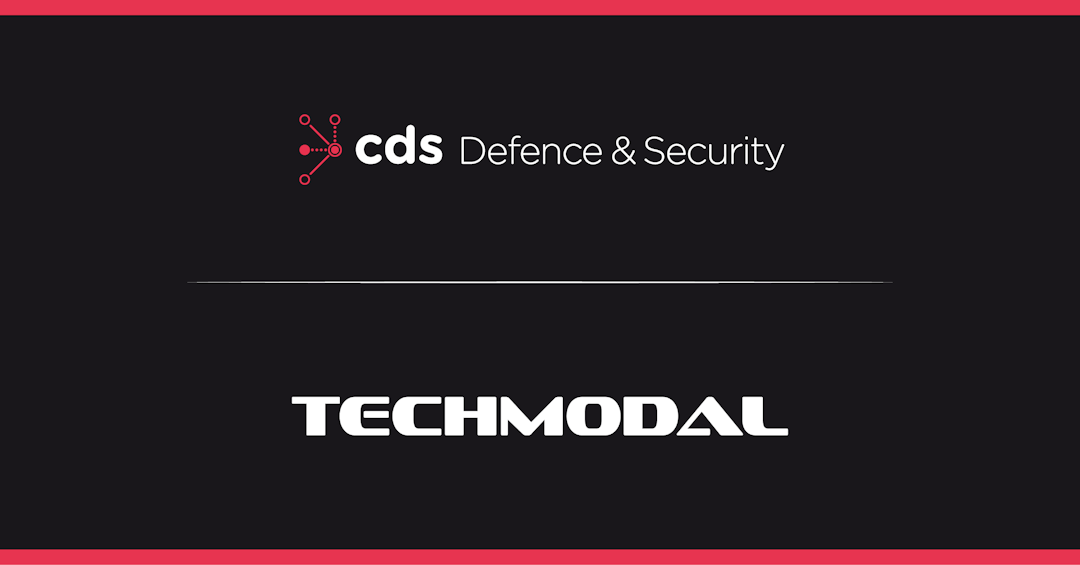The Role of a Data Partner in Enabling Integrated Operating Systems
CDS Defence & Security and Techmodal explore how data partnerships can unlock the power of Integrated Operating Systems.

Opportunities and Obstacles in Integration
The aspiration to move toward Integrated Operating Systems (IOS), such as LIOS, represents a necessary evolution in how defence capabilities are procured, sustained, and deployed. IOS promise substantial advantages in the through-life support of grouped capabilities, enabling flexibility, operational readiness, and greater cost efficiency across platforms and services.
However, with this evolution comes a new set of complex challenges.
One of the most critical is the lack of standardisation in data sharing across Original Equipment Manufacturers (OEMs) and relevant supply chains. Each OEM, while often excellent within their domain, typically operates under their own data formats, terminologies, and digital architectures. Furthermore, these companies are commercial competitors, making them understandably reluctant to expose sensitive performance data or intellectual property without clear protections in place.
This fragmented data landscape not only hampers insight generation across systems but also risks undermining the benefits that IOS aim to achieve namely, system-wide optimisation, rapid decision-making, and fleet-level coordination creating wider cost efficiencies.
The Case for a Data Partner
To enable the authority to deploy and sustain critical assets with speed, flexibility, and cost-efficiency, a new approach to data management is essential.
While individual OEMs may have robust internal systems, there is currently no consistent mechanism for pooling data across multiple OEMs and generating cross-platform insights, whilst doing so in a way that protects commercial sensitivities.
This is where a neutral, independent data partner becomes critical.
As a non-manufacturer, a data partner can act as the trusted intermediary with no vested interest in the data, other than to improve the stakeholder experience. With experienced analysts and data scientists, a data partner would enable secure, standardised data collaboration between stakeholders, while upholding the boundaries of commercial confidentiality and ensuring compliance with data governance protocols.
Key Benefits of a Data Partner
A well-structured data partner relationship would deliver technical, operational, strategic, and commercial benefits.
Independence and Trust
Independence ensures OEMs can share data securely and selectively, confident that their competitive advantage will not be undermined. This creates a trusted foundation for collaboration and interoperability.
Cost Efficiency
Cost efficiency is improved by centralising data infrastructure, tooling, and expertise. Rather than duplicating analytics functions across each supplier or platform, a single data partner provides shared services at scale—reducing programme-wide overheads and increasing delivery speed.
Improved Stakeholder Experience
With a single point of contact for data modelling, governance, and compliance, both MOD and industry benefit from reduced complexity and clearer lines of accountability. Risk mitigation becomes proactive, not reactive.
Competitive Advantage and Decision Superiority
By embedding experienced analysts and data scientists, they enable faster interpretation of operational data, improved readiness, and timely performance feedback to OEMs. This accelerates issue resolution and informs future capability development, creating a feedback loop that benefits all parties.
Operational Framework: How a Data Partner Adds Value
Phase 1: Asset-Level Optimisation
The process begins with a focus on individual assets using available data to establish a baseline understanding of real-world performance and support needs.
In theory, all assets should come with a fully populated and current Logistics Support Analysis Record (LSAR) as part of MOD’s procurement process. However, LSARs are often incomplete, inconsistent, or outdated, operational data (e.g., usage patterns, maintenance logs) may be in silos and not integrated, even within the same domain or programme.
A data partner would be able to clean, validate, and standardise existing LSAR and associated asset data, enrich it with historical usage, maintenance, upgrade, and environmental data in a data aggregation tool and use it to build a digital backbone of each asset which would be the precursor to real-time, data-driven simulation of its performance and support ecosystem i.e. a Support Digital Twin.
This provides the baseline for:
Comparing theoretical vs. actual provisioning
Identifying inefficiencies or systemic risk
Generating asset-specific readiness and cost models
Phase 2: Integrated Operating System-Level Integration and Modelling
Once asset-level data is structured and validated, it can be scaled to build a full picture of the Integrated Operating System. The data partner’s toolset would allow for:
Cross-asset modelling (e.g. supply chain resilience, obsolescence risk, cost forecasting)
Aggregated analysis across fleets, domains, or mission types
Identification of bottlenecks and emergent vulnerabilities
Real-time integration into planning and readiness platforms
This would then deliver a single source of truth for IOS performance and sustainment, a common modelling framework that reduces duplication across platforms with improved data agility to respond to changing mission requirements or threat environments.
The Data Flow Process:

Expected Outcomes
By implementing a structured, repeatable approach across assets and systems, a data partner can deliver:
A clean, complete, and consistent dataset for every asset in scope
An integrated, cross-platform dataset for the full IOS environment
Reusable models that support wargaming, inventory planning, cost modelling, and readiness assessments
A standard process for updating datasets with new operational data
A fast, modular framework for adapting models to evolving requirements
These deliverables underpin strategic decision-making, allowing MOD and suppliers to respond more quickly to emerging needs, forecast support costs with greater accuracy, improve equipment availability and reduce total lifecycle cost.
Summary and Invitation to Engage
Integrated Operating Systems offer the MOD a transformative opportunity to improve readiness, efficiency, and capability coherence. But without trusted, secure, and standardised data sharing, the true potential of these systems may remain unrealised.
A data partner offers the tools, independence, and expertise required to unlock these benefits without compromising on IP security, compliance, or commercial integrity.
We welcome further discussion and engagement on this topic and invite you to book a meeting with one of the team.